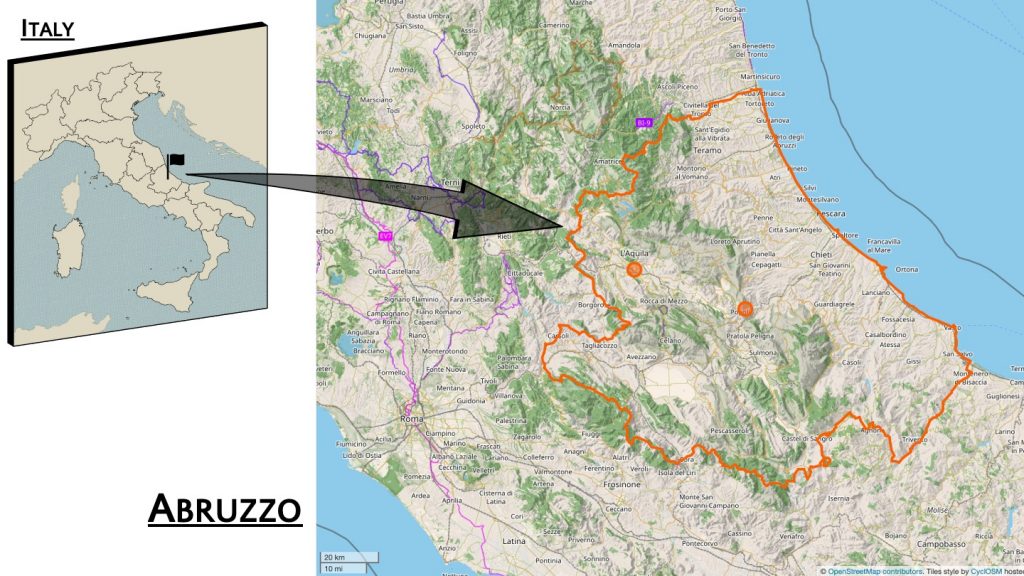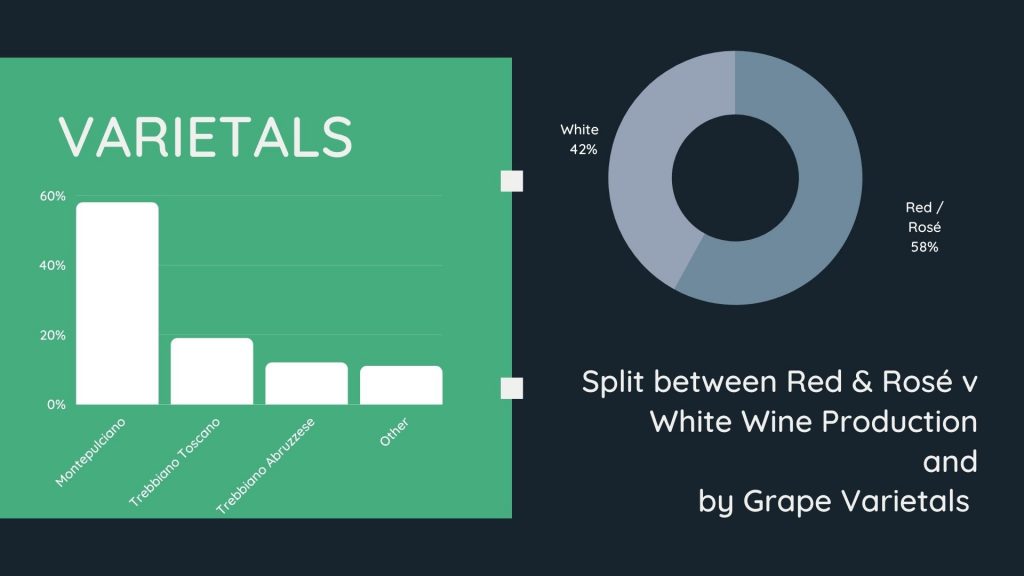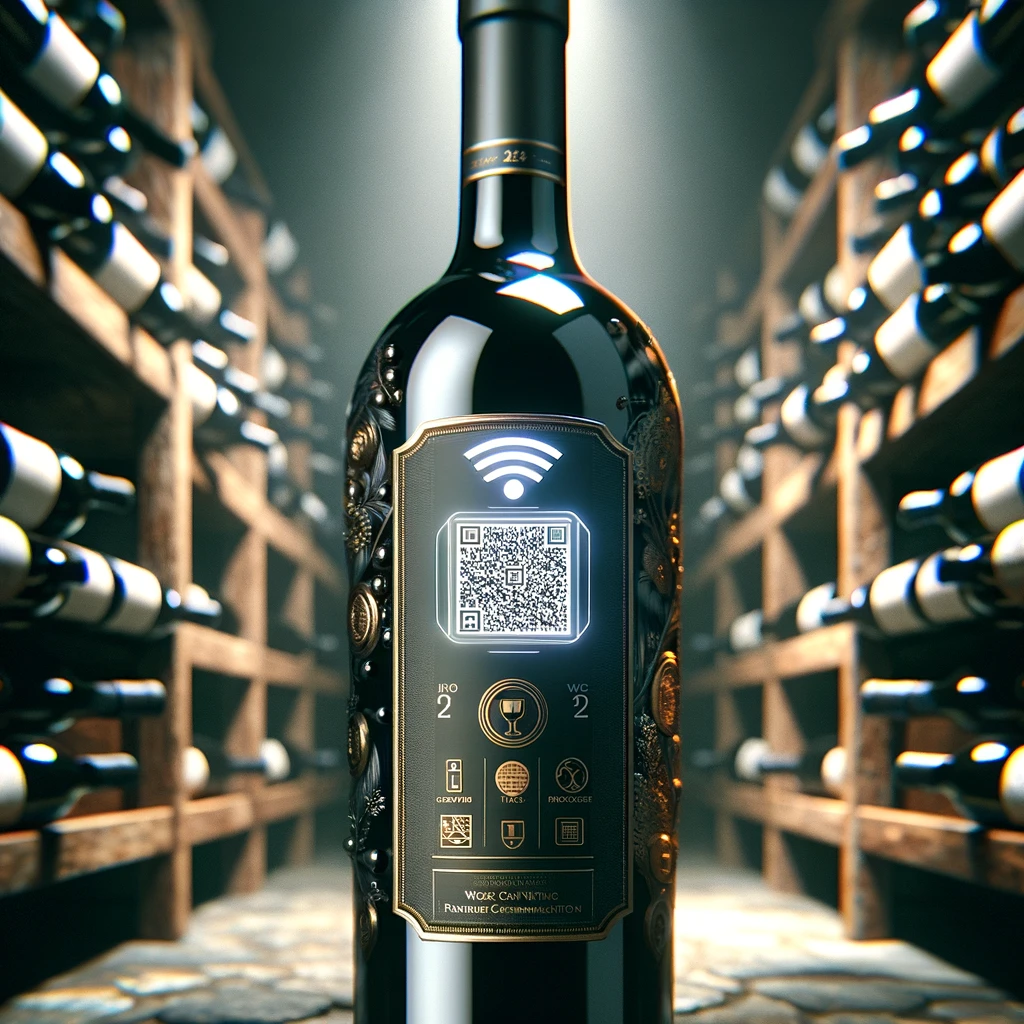Because almost half of its territory are national parks and protected nature reserves, Abruzzo is the Greenest Region in Europe, but it’s also home to some great wines.

The region of Abruzzo with its Adriatic coast on the east and Rome to its west (Source: Pixabay and © OpenStreetMap contributors – available under the Open Database Licence )
The Key Facts
Climate
Half of its territory is assigned to national parks and protected nature reserves, Abruzzo is considered the greenest region in Europe. It consists mostly (99%) of hilly ground and mountainous terrain including the Gran Sasso massif, the highest peak in the Apeninnes (the mountain range that extends 1,200km / 750 miles along the Italian pensnsular). With a coastal line of more than 130km on the Adriatic, its climate is divided between the Mediterranean climate near the sea and more continental caused by the mountain ranges in the interior, with Rome only 80km away from the region’s western border.
Soil
Along the coast the soil generally is made of calcareous clay, which is a good foundation for structured wines like the region’s principal variety, the Montepulciano d’Abruzzo (more on that below). Towards the mountains, the vineyard soils have a higher element of sand and clay.
In the Vineyard / Vine Training Systems
While the Guyot has found its way into the vineyards of Abruzzo, too, it is the traditional pergola abruzzese (a system consisting of vertical wooden poles supporting a scaffolding of iron wires that carry the branches of the vine) that is making a comeback (though it wasn’t ever really gone).
Production
According to the official ISTAT data (the Italian National Institute of Statistics), the vintners of Abruzzo in 2020 produced 2.886 million (or 320,660 cases) on an area of 29,530 hectare (about 73,000 acres). That’s a drop of 6,5% compared to 2019, which was more in line with previous years but it’s spot on when you take the ten year average. The area under production has been consistent over the last couple of years after it had seen a reduction of more than 10% over the two years of 2016 and 2017.

Varietals & Wines
The production is split between 42% white wine and 58% red and rosé wine, which is called rosato and used in the famous Cerasuolo d’Abruzzo, one Italy’s best rosé wines.
The red variety of the Montepulciano d’Abruzzo (not related to the Vino Nobile di Montepulciano, which is made of Sangiovese and comes from the place of the same name in Tuscanny) is the lead act among all varietals and accounts for almost 60 percent of the total production.
For white wines, Trebbiano Toscano and Trebbiano abruzzese are the main white varietals and produce a third of the total but autochthonous varieties like Pecorino, Passerina, Cocociola or Montonico are on the rise.

Wine growing areas / DOCGs & DOCs
You could cut Abruzzo roughly into two halves parallel to its Adriatic coast and on the right (i.e., on the coast) you would have DOC areas of the Montepulciano d’Abruzzo DOC (i.e. still red wines from the grape of the same name) with its sub-zones, the Trebbiano d’Abruzzo DOC (white wines from Trebbiano) and the Cerasuolo d’Abruzzo DOC (rosato made from the Montepulciano d’Abruzzo grape). In the northern part of this area, you have a corner designated for the Montepulciano d’Abruzzo Colline Teramane DOCG (the only DOCG of Abruzzo) that sets additional quality requirements for ageing and a minimum 90% coming from Montepulciano and a maximum of 10% Sangiovese. On the other end of the coast, you’ll find the province of Chieti (still in the boundaries of the DOC areas just described), which is responsible for 80% of the region’s entire production and one of the biggest by quantity in the whole of Italy.
In a Nutshell: The Key Facts Infographic
And if you want the key facts of the Wines of Abruzzo, download and print our infographic:





